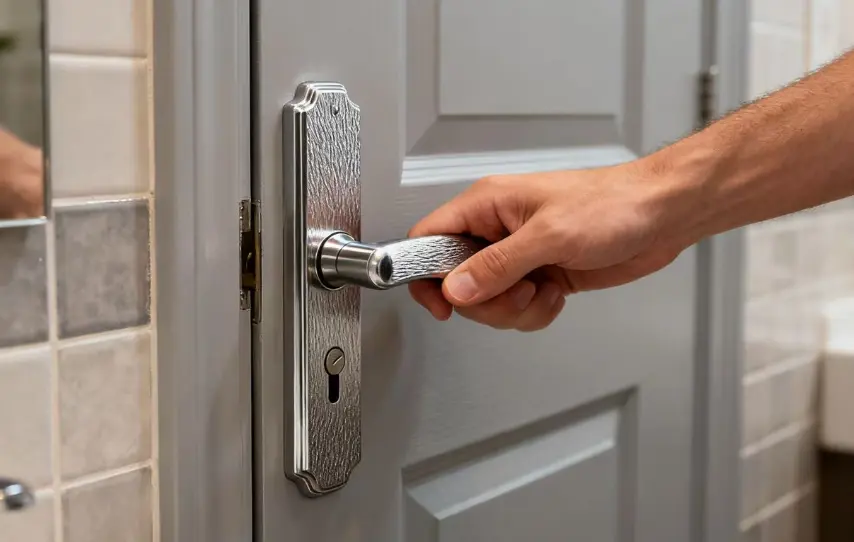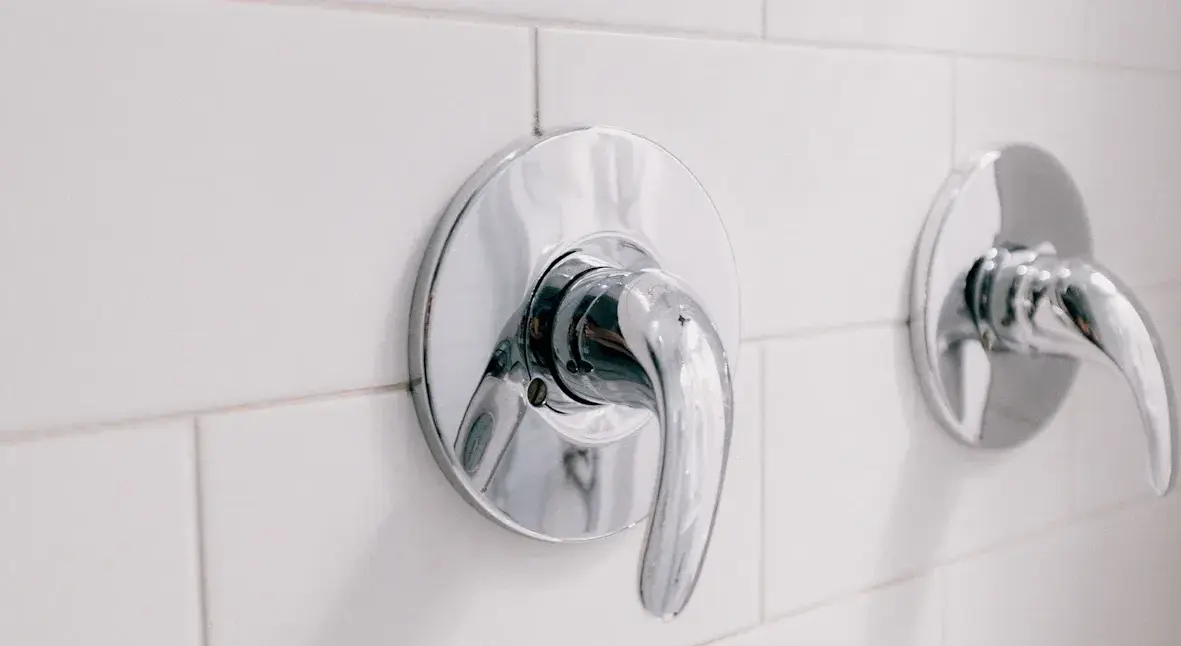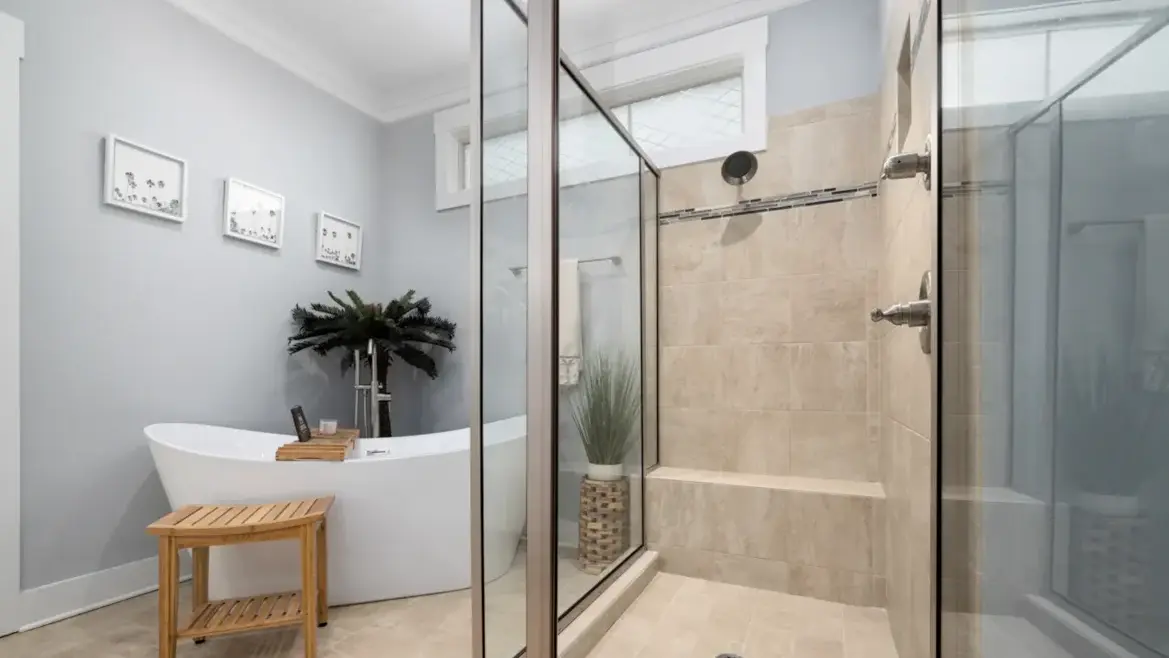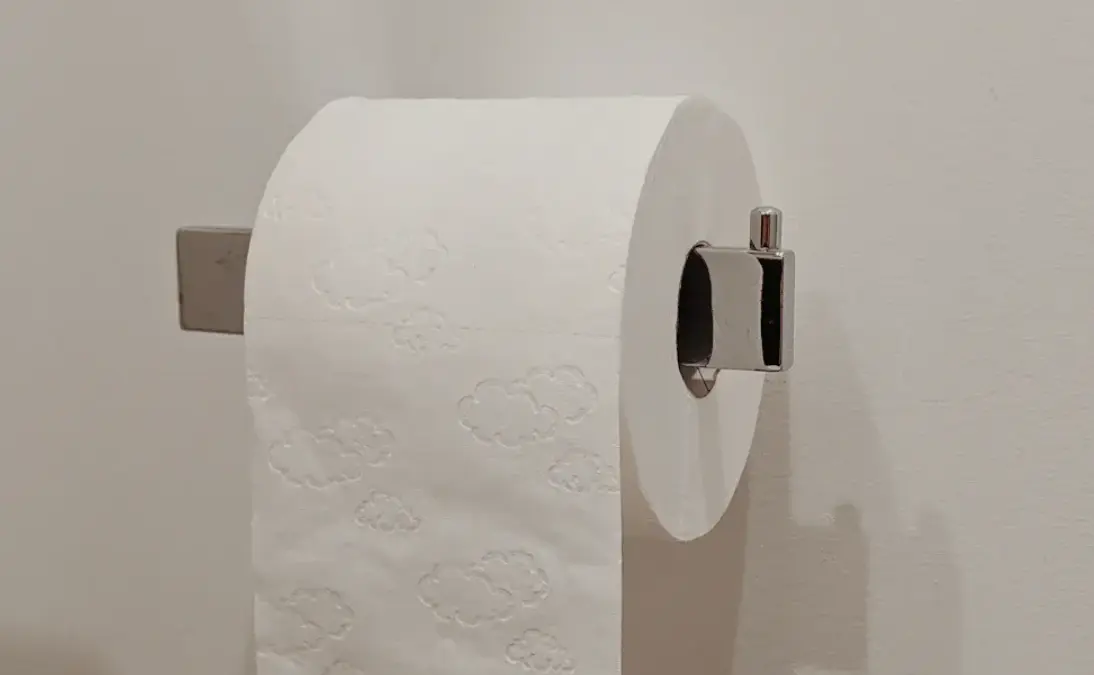Top 10 Factors for Picking the Right Door Handles for Your Home
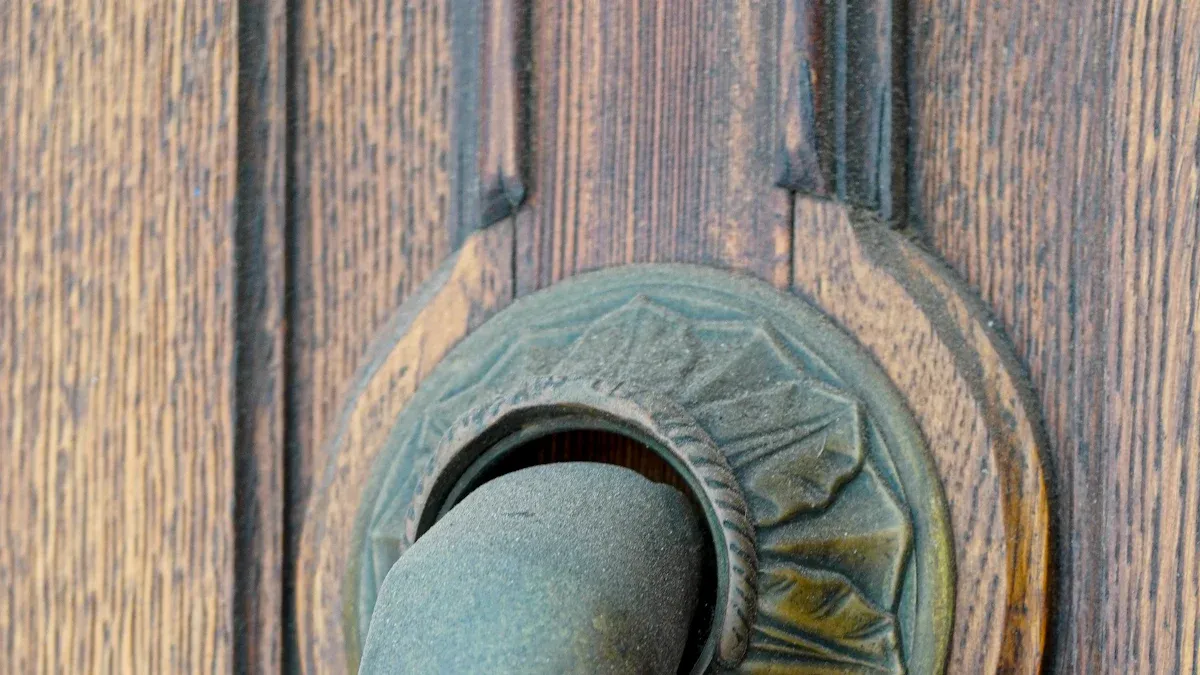
A thoughtfully chosen Door Handle profoundly impacts a home's appearance and practical use. Homeowners discover the right selection elevates their living spaces. Upgrading door hardware, including these essential fittings, offers an impressive 95% return on investment. This guide empowers individuals to navigate available choices, ensuring they find the perfect hardware for every area. An informed decision, perhaps even considering a Custom Door Aluminum Alloy Die-Casting OEM Factory, guarantees lasting satisfaction with their selection.
Key Takeaways
- Choose a door handle that looks good and works well for your home.
- Different handle types, like knobs, levers, and pulls, fit different needs.
- Handle materials, such as brass or stainless steel, affect how long they last.
- Pick a handle style that matches your home's design, like modern or traditional.
- Consider security features, such as smart locks, for safety.
- Ensure handles are easy for everyone to use, including those with limited hand movement.
- Measure your door's backset and bore holes for a correct fit.
- Balance the handle's cost with its quality for long-term value.
Understanding Door Handle Fundamentals
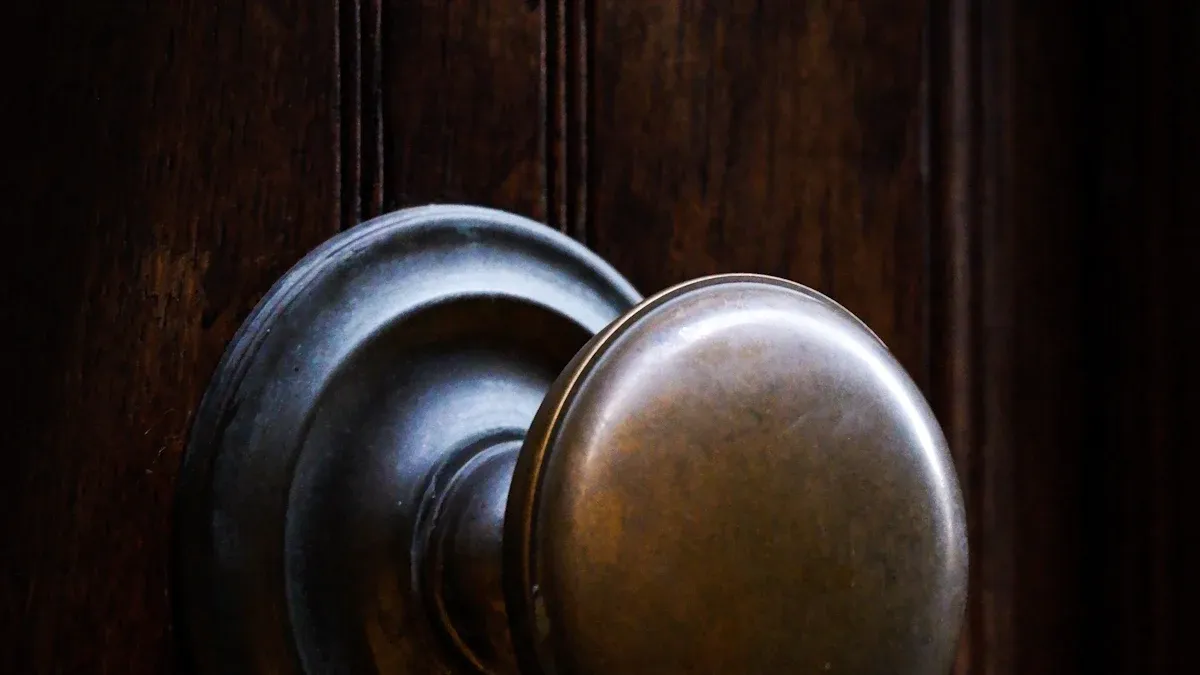
The Dual Role of a Door Handle
Functionality in Everyday Life with a Door Handle
A Door Handle serves as a primary interface between individuals and their living spaces, facilitating access and security. Its core functionality relies on several key components working in unison. The lever or knob, the most visible part, allows users to operate the mechanism. Levers push down, while knobs turn. Both can be sprung, returning to an idle position, or unsprung, requiring manual return. Inside, a spring mechanism, present in sprung levers and doorknobs, returns the handle to its neutral state and prevents overworking. A spindle, typically a steel rod, connects the two handles on either side of the door. It fits through an aperture in the handle and a matching hole in the latch or lock. When someone operates the handle, the spindle rotates to retract the latch bolt, opening the door. A backplate or rosette, a visible plate, secures the handle to the door and conceals the internal mechanism. These components ensure smooth, reliable operation for daily use.
Aesthetic Contribution to Home Decor with a Door Handle
Beyond its practical role, a Door Handle significantly contributes to a home's aesthetic appeal. It acts as a small but impactful design element, enhancing the overall decor. Materials such as stainless steel, brass, bronze, and aluminum each offer unique characteristics and visual appeal. Pull handles make a bold statement, offering functionality and enhancing curb appeal. Lever handle sets combine style and ease of use, providing a comfortable grip and elevating entryway aesthetics. Knob sets, with their spherical design, suit both classic and contemporary aesthetics, providing a refined look. Ornamental Door Handles, with intricate designs and decorative details, serve as striking focal points, adding luxury and charm. Backplate handles feature a decorative plate behind the handle, adding visual interest and enhancing overall aesthetics with various designs and finishes. Finishes like matte black provide a sleek, sophisticated look for modern interiors, while oil-rubbed bronze offers a deep, rich color for classic settings.
Key Considerations for Door Handle Selection
Balancing Form and Function in Door Handle Design
Effective Door Handle design achieves a harmonious balance between its form and function. Homeowners must consider both aspects to ensure satisfaction. A handle must operate reliably and comfortably while also complementing the home's architectural style and interior design. For instance, a beautifully crafted handle loses its appeal if it feels awkward to grip or fails to latch properly. Conversely, a highly functional but aesthetically jarring handle can detract from a room's ambiance. The best choices integrate ergonomic design with appealing visual elements, ensuring ease of use for all ages and contributing positively to the home's decor.
Setting the Stage for Informed Door Handle Choices
Selecting the right Door Handle requires careful evaluation of its quality and suitability. Homeowners should understand material grades, such as SUS 304 for stainless steel, and assess supplier quality control processes, including raw material checks and in-line inspections. Ensuring compliance with industry certifications, like ANSI/BHMA, guarantees reliability and safety. Inspecting the finish and craftsmanship for consistency, polish quality, and the absence of defects like rough edges is crucial. Assessing durability and weight indicates a solid, substantial product. Ergonomic and aesthetic standards, including comfort, grip, scratch resistance, and visual consistency, also play a vital role. Finally, reviewing the supplier's track record, reputation through customer reviews, and warranty coverage provides assurance for a lasting investment.
The Top 10 Factors for Picking the Right Door Handles for Your Home
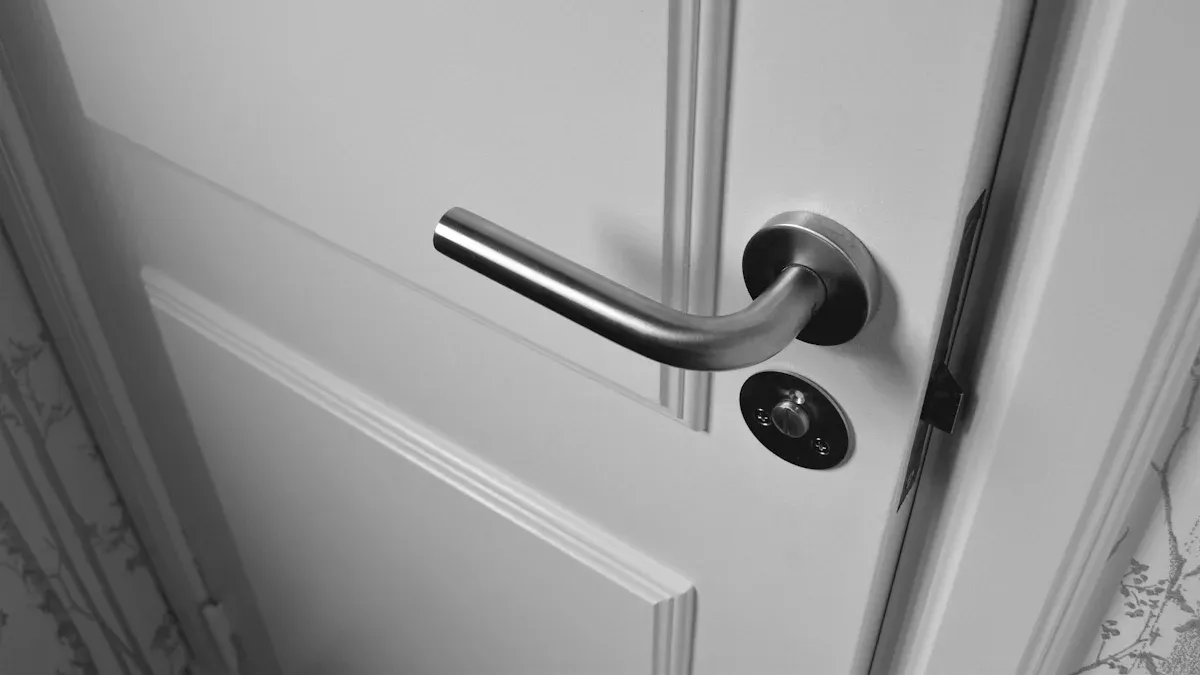
Factor 1: Type of Door Handle
The type of Door Handle significantly impacts both usability and aesthetic. Different designs cater to specific needs and door types.
Door Knobs for Various Applications
A door knob is a rounded device attached to a door, enabling opening, closing, and locking through twisting or turning. Typically fixed through a hole in the door, they are a classic choice often found in older homes and buildings. Door knobs offer a timeless appearance, making them ideal for homes with classic or traditional designs, such as Victorian or colonial styles. Their straightforward and sophisticated look complements various architectural aesthetics. Installation is generally simple, requiring only basic tools. This makes them a convenient option for DIY enthusiasts looking to upgrade their homes without professional assistance. Known for their robustness, these fixtures require minimal care. Their sturdy construction ensures long-term reliability and functionality, as they are less prone to loosening over time compared to levers, making them suitable for busy households.
Door Levers for Ease of Use
Door levers provide an ergonomic advantage. Users operate them with a simple push down, making them ideal for individuals with limited hand mobility or for high-traffic areas. Their sleek design often complements modern and contemporary interiors, offering both functionality and a stylish appearance.
Door Pulls for Cabinets and Entryways
Door pulls function primarily on doors that do not require a latching mechanism, such as pantry doors, closet doors, or large entry doors. They also serve as decorative elements on cabinets. These fixtures offer a firm grip and come in various designs, from minimalist bars to ornate designs, enhancing the aesthetic of the furniture or door.
Thumb Latches for Traditional Doors
Thumb latches offer a distinctive, traditional look. They typically feature a thumb-operated lever on one side that lifts a latch bar on the other. Homeowners often choose them for rustic, farmhouse, or colonial-style doors, adding historical charm and a unique tactile experience.
Factor 2: Door Handle Material and Durability
The material of a Door Handle dictates its durability, longevity, and overall feel. Selecting the right material ensures both performance and aesthetic consistency.
Brass Door Handles for Classic Appeal
Brass fixtures exude classic appeal. This material is solid and long-lasting, developing a rich patina over time that enhances its character. Brass is also anti-rust, contributing to its durability. Solid brass handles can last for decades, with their finish gracefully aging.
Stainless Steel Door Handles for Modern Durability
Stainless steel fixtures offer modern durability. They are incredibly long-lasting and highly resistant to corrosion and rust, making them suitable for both humid and dry climates. Stainless steel withstands heavy usage, repetitive impacts, and various weather conditions without deteriorating. With proper care, these handles can last many decades.
Zinc Alloy Door Handles for Cost-Effectiveness
Zinc Alloy fixtures provide a cost-effective solution. They are durable and resistant to corrosion, especially against various weather conditions. However, their protective coating can deteriorate with constant usage and exposure to moisture or sunlight, potentially leading to discoloration or oxidation. Zinc Alloy is slightly less strong than other materials like brass or stainless steel.
Wrought Iron Door Handles for Rustic Charm
Wrought iron fixtures bring rustic charm. Their heavy, robust nature makes them a strong choice for traditional, industrial, or farmhouse-style homes. Wrought iron offers a distinct, handcrafted appearance, providing a sense of permanence and strength.
Crystal and Glass Door Handles for Elegant Touches
Crystal and glass fixtures add elegant touches. They serve as decorative accents, catching light and creating a luxurious feel. However, glass is fragile and susceptible to chipping and shattering, making these handles best suited for low-traffic areas where aesthetics take precedence over heavy-duty durability.
Factor 3: Door Handle Style and Aesthetics
Modern and Contemporary Door Handle Styles
Modern and contemporary styles feature clean lines, minimalist designs, and geometric shapes. Finishes like matte black, polished chrome, or brushed nickel often define these styles. They complement sleek interiors, emphasizing simplicity and functionality.
Traditional and Classic Door Handle Styles
Traditional and classic styles often incorporate ornate details, curved lines, and decorative flourishes. Finishes such as oil-rubbed bronze, antique brass, or polished brass enhance their timeless appeal. These styles suit homes with historical architectural elements or a more formal aesthetic.
Rustic and Farmhouse Door Handle Styles
Rustic and farmhouse styles embrace natural textures and distressed finishes. Wrought iron, aged bronze, or matte black often characterize these fixtures. They feature robust designs, sometimes with visible fasteners, contributing to a warm, inviting, and unpretentious atmosphere.
Antique and Vintage Door Handle Styles
Antique and vintage styles replicate historical designs or feature genuine aged pieces. They often showcase intricate craftsmanship, unique patinas, and period-specific details. These fixtures add character and a sense of history to a home, making a distinctive statement.
Factor 4: Door Handle Functionality and Application
The intended use of a door dictates the type of handle it requires. Different applications demand specific functional features.
Passage Door Handles for Hallways
Passage handles are ideal for doors that do not require locking. These handles lack an internal locking mechanism. They simply allow users to open and close a door by turning the knob or lever. Homeowners typically use them on interior doors where privacy or security is not a concern. Examples include doors between a living room and a kitchen or for closets.
Privacy Door Handles for Bathrooms and Bedrooms
Privacy handles offer a locking mechanism for personal spaces. They include a privacy pin. When someone engages the privacy pin from the interior side, the door locks. These handles also feature an emergency release hole on the exterior rosette. This allows someone to disengage the door with a narrow object during emergencies. People commonly use them on doors requiring privacy, such as restrooms or bedrooms.
Dummy Door Handles for Closets
Dummy handles are non-functional. They do not turn, latch, or lock. They serve primarily aesthetic purposes. People frequently use them on closet doors, pantry doors, or any door where a functional handle is unnecessary. They provide a grip without a latch. Homeowners also use them on double doors where only one side needs to operate, such as French doors where one panel remains fixed. They maintain aesthetic consistency on French doors or cabinet-style fronts. They are also suitable for shallow-profile doors where standard functional hardware would not fit due to limited depth.
Keyed Entry Door Handles for Exterior Doors
Keyed entry handles provide enhanced security. They incorporate a keyed cylinder. This allows someone to lock the door with a key. They can serve as an alternative to an entry set on exterior doors. People also use them on interior doors where key-based locking is desired, such as an office or a back door.
Factor 5: Door Handle Security Features
Security is a paramount concern for exterior doors and certain interior spaces. The type of locking mechanism significantly impacts protection.
Single Cylinder Door Handle Locks
A single-cylinder deadbolt operates with a key on the exterior and a thumb-turn on the interior. This configuration offers good security against forced entry from the outside. It allows for quick exit without a key, simply by turning the thumb-turn. This makes it convenient for everyday use. However, it becomes vulnerable if an intruder breaks nearby glass and reaches the thumb-turn. Most residential building codes generally find it compliant for emergency egress.
Double Cylinder Door Handle Locks
A double-cylinder deadbolt requires a key on both the exterior and interior. This offers enhanced security against forced entry and unauthorized exit. It prevents an intruder from unlocking the door by breaking nearby glass and reaching in, as a key is necessary for both sides. However, it requires a key to unlock from the inside. This can pose a safety hazard during emergencies like fires. This type of lock is less convenient for daily use. It may violate fire safety codes in some residential areas due to restricted emergency egress.
Smart Locks and Keyless Entry Door Handles
Smart locks and keyless entry systems offer advanced security and convenience. They often integrate with smart home systems. Users can lock and unlock doors remotely, grant temporary access codes, and monitor entry activity. These systems typically use keypads, fingerprint scanners, or smartphone apps for access. They eliminate the need for physical keys.
High-Security Deadbolts for Enhanced Protection
High-security deadbolts provide superior protection against forced entry. They feature a forged, solid-brass plug and cylinder. They include a free-spinning, sawproof, hardened-steel pin in the bolt. These deadbolts typically have a Grade 2 or Grade 1 ANSI/BHMA rating. Their housing protrudes into the door face. They feature a large, easy-to-use interior turnpiece. A minimum 1-inch throw bolt and a six-pin keying system further enhance their security.
Factor 6: Door Handle Finish and Color
The finish and color of a Door Handle significantly influence its aesthetic contribution to a home. They can complement or contrast with existing decor.
Satin Nickel Door Handle Finishes
Satin nickel offers an elegant, subtle finish with a slight sheen. It appears less prominent than polished nickel. This finish is ideal for minimalistic designs. It looks fantastic against dark hues like black, navy blue, and grey. It also works well with bold geometric patterns, bright solid colors, and avant-garde furniture. Satin nickel complements modern finishes and subdued looks. It blends with cool tones and lighter color schemes, including whites, grays, and pastels. It is a versatile choice for both light and dark colors.
Oil-Rubbed Bronze Door Handle Finishes
Oil-rubbed bronze provides a deep, rich color with warm undertones. It often features an intentionally worn appearance, adding character. This finish creates a contemporary cottage or coastal feel. It pairs effectively with an all-white color palette. It contributes to a "collected over time" aesthetic, especially when mixed with other finishes.
Polished Chrome Door Handle Finishes
Polished chrome is a sleek, versatile, and neutral-toned finish. It works well in almost any space. It has a bright, eye-catching, mirrored finish. This finish draws inspiration from Art Deco. It pairs beautifully with modern, minimalistic styles. It coordinates well with neutral or white doors and walls. Polished chrome is a popular, timeless choice. Its shiny, reflective surface gives a clean look and near-perfect reflection.
Matte Black Door Handle Finishes
Matte black offers a modern, versatile, and low-maintenance finish. It adds flair without being too flashy. It suits both traditional and contemporary styles. It is reminiscent of wrought-iron details. It pairs well with brass or nickel. Matte black provides a sleek, sophisticated look for modern interiors.
Aged Bronze and Pewter Door Handle Finishes
Aged bronze and pewter finishes evoke an old-world feel. Aged bronze, similar to antique brass, offers a traditional look with brown and golden tones. It features an intentionally worn appearance. Pewter often presents a muted, silvery-gray tone. These finishes add vintage charm to modern spaces. They provide a sense of history and character.
Factor 7: Door Handle Ergonomics and Accessibility
Ease of Use for All Ages with Door Handles
Ergonomics plays a crucial role in selecting hardware for a home. A well-designed handle ensures comfortable operation for everyone, from young children to seniors. Handles should offer a secure grip and require minimal force to operate. This consideration becomes particularly important in multi-generational households where diverse physical capabilities exist. Choosing hardware that accommodates various hand sizes and strengths enhances daily living for all residents.
ADA Compliance Considerations for Door Handles
Accessibility standards, particularly those outlined by the Americans with Disabilities Act (ADA), provide essential guidelines for handle selection. These standards ensure ease of use for individuals with disabilities.
- Door Handles, pulls, latches, and locks must be operable with one hand. They should not require tight grasping, pinching, or wrist twisting.
- Lever-operated, push-type, and U-shaped handles are recommended due to their inherent ease of use for individuals with limited hand function.
- Door hardware, including deadbolts, must also be operable with one hand. They should not require tight grasping, pinching, or twisting.
- Hardware should be positioned at an accessible height, typically between 34 inches (86.36 cm) and 48 inches (121.92 cm) above the floor.
- Operable parts must be usable with one hand and should not require tight grasping, pinching, or twisting of the wrist.
- The maximum force required to activate operable parts is 5 pounds (22.2 N).
- Hardware that can be operated with a closed fist or a loose grip accommodates a wider range of users.
- Hardware requiring simultaneous hand and finger movements, which demands greater dexterity and coordination, is not recommended.
- The height of the handle must be between a minimum of 34 inches and a maximum of 48 inches.
- Exceptions to the height requirement include pre-existing locks and gates protecting pools, spas, and hot tubs, which can be up to 54 inches high.
Lever Door Handles for Enhanced Accessibility
Lever handles consistently emerge as the preferred choice for enhanced accessibility. Their design allows for operation with a simple downward push, making them ideal for individuals with arthritis, carpal tunnel syndrome, or other conditions affecting hand strength and dexterity. Levers also prove easier to operate when carrying items, as an elbow or forearm can activate them. This makes them a practical and inclusive option for any home.
Factor 8: Door Handle Installation and Compatibility
Understanding Backset and Bore Holes for Door Handles
Proper installation begins with understanding key measurements. Backset refers to the distance from the edge of the door to the center of the bore hole (the large hole drilled for the handle mechanism). Bore hole diameter refers to the size of the holes drilled into the door. These dimensions are critical for ensuring a new handle fits correctly.
| Dimension Type | Standard Residential | Other Common Sizes |
|---|---|---|
| Backset | 2-3/8 inches | 2-3/4 inches (some exterior/commercial) |
| Bore Hole Diameter | 2-1/8 inches (modern locksets) | 1-1/2 inches (older doors) |
Homeowners must measure these dimensions accurately before purchasing new hardware.
DIY vs. Professional Door Handle Installation
Homeowners often face a choice between DIY installation and hiring a professional. DIY installation can save money and offers a sense of accomplishment for those with basic carpentry skills. However, incorrect installation can lead to functional issues, security vulnerabilities, or damage to the door. Professional installation ensures proper fit, security, and function, especially for complex locking mechanisms or when modifications to the door are necessary. A locksmith can guarantee correct security setup and avoid common errors like improper alignment or overtightening screws.
Retrofit Considerations for Existing Door Handles
Retrofitting new handles onto existing doors presents unique challenges. Homeowners must consider several factors to ensure a successful upgrade.
- Mismatched wear and tear: Using old hardware on a new door can lead to uneven wear, potentially causing the handle to malfunction prematurely.
- Voided warranties: Many new door warranties specify that all components must be new at installation. Using outdated hardware can void these warranties.
- Increased costs: Attempting to save money by reusing old hardware can result in paying double if the old hardware fails and needs replacement shortly after the new door installation.
- Security risks: Old or compromised locks pose a significant security threat, especially for entry doors, as they may not provide adequate protection.
- Door thickness: This is primarily a concern for older homes and exterior doors, as most standard doors are 1 3/8 to 1 3/4 inches thick.
- Backset: This refers to the horizontal distance from the door's edge to the handle's center, with standard measurements being 2 3/8 to 2 3/4 inches.
- Bore sizes: These are the diameters of the holes drilled for the handle/cylinder and the latch/bolt. These are typically very standard, making under or oversized holes rare.
Retrofitting new handles involves more complexity than initially perceived, particularly in ordering the correct items and ensuring the right sets for each door. A critical consideration is 'handedness' or 'handing' for lever handles or locking mechanisms. This refers to the direction the door swings and the side the handle is on. To determine handing, open the door (assuming it swings inward), stand with your back to the hinges facing the strike plate. If the open door is on your left, it's left-handed; if on your right, it's right-handed. This rule reverses for doors that swing outwards, such as exterior or closet doors. Incorrectly determining handing can lead to handles facing the wrong direction. Common issues during retrofitting include:
- Loose handle: This can be resolved by tightening all screws and verifying a proper fit.
- Misaligned strike plate: Adjusting its position or chiseling the recess deeper can correct this issue.
- Sticking lock or latch: Ensure the door is hung correctly and the strike plate is properly aligned.
- Need for professional help: Consider hiring a locksmith if uncomfortable with the installation, if door modifications are needed for a new lock type, or to ensure correct security setup. Common DIY errors include improper alignment, overtightening screws, and insufficient lock testing.
Factor 9: Door Handle Budget and Value
Price Ranges and Expectations for Door Handles
The cost of hardware varies significantly based on material, brand, and design complexity. Homeowners can find options across a wide spectrum.
- Save ($100 or Less): This category includes inexpensive, good-quality hardware sets with simple modern styles. Brands like Kwikset, Delany, Miseno, Schlage, and Cauldham offer good looks at a lower cost. However, they might not be as sturdy or durable as more expensive options.
- Spend ($150-$300): Moving up to this level typically means better machining and materials, leading to higher quality. Experts recommend brands such as Emtek and Baldwin for their quality and style that do not excessively break the bank.
- Splurge ($400-$800+): This high-end category features brands known for incredible quality, craftsmanship, and unique designs. Rocky Mountain Hardware, Rejuvenation, Samuel Heath, Grandeur, E.R Butler & Co, Nanz, Olivari, Valli & Valli, and Colombo are highlighted. These options often provide heavier, more luxurious, and sometimes customizable hardware, including precious metals and intricate details. Hardware can be made from glass, wood, ceramic, plastic, or a plethora of different metals. Handles come in various forms such as knobs, levers, or pulls.
Balancing Quality with Affordability in Door Handles
Finding the right balance between quality and affordability requires careful consideration. Homeowners should allocate 5-10% of their total redesign budget for hardware, recognizing them as long-term investments that balance aesthetics and durability. Researching price ranges by comparing brands, designs, and prices across online and offline stores helps in making informed decisions. Bulk buying multiple handles can reduce the unit cost, especially for larger projects or when uniformity is desired. Taking advantage of promotions and sales can also help acquire premium quality handles at a lower cost.
Long-Term Value vs. Initial Cost of Door Handles
The initial cost of a handle does not always reflect its long-term value. Several factors contribute to the overall cost-effectiveness over time.
- Maintenance and Longevity: Regular cleaning, lubrication of locking mechanisms, tightening screws, and specific care for different finishes (e.g., polishing brass) are crucial for lasting functionality and appeal. Signs for replacement include loose handles/spindles, difficult operation, visible damage, and rust/corrosion.
- Security Features: For long-term value and safety, consider robust locking mechanisms like deadbolts, sash locks, or multi-point locking systems for entrance doors. Smart handles offer enhanced security and convenience with features like keyless entry, remote access, and biometric scanning.
- Design Complexity: Detailed and complex designs, as well as customization options, add value and cost. Cheap handles may lack good grip or have latches that get stuck.
- Material: Different materials like Brass, Zinc, Aluminium, and Stainless Steel offer beautiful finishes and long life. Solid metals are more expensive than metal-plated options due to their longevity and resistance to peeling. Material choice should also consider environmental factors like humidity and salty atmospheres.
- Coating and Finishing: The type of coating (e.g., polish, antique, satin) affects the price, with durable and aesthetically pleasing finishes costing more.
- Suitability for Area: Handles for high-traffic areas (e.g., exterior doors) or areas requiring higher security (e.g., front entry doors, interior doors with locks) should be more durable and reliable, making them more expensive but offering better long-term value. Kitchen and cabinet hardware also impact functionality and aesthetics.
- Installation Expenses: Professional installation ensures proper fit, security, and function, which can add to the overall cost but contributes to long-term performance.
| Material | Advantages | Ideal For | Long-Term Value/Cost-Effectiveness |
|---|---|---|---|
| Zinc Alloy | Lightweight, corrosion-resistant, wide range of designs/finishes | Budget-conscious homeowners looking for stylish and functional handles | Affordable and versatile |
| Stainless Steel | Strength, scratch-resistant, rust-proof, easy to clean, sleek look | High-traffic areas like kitchens and bathrooms, where durability is essential | Durable and low maintenance |
| Aluminum | Lightweight, corrosion-resistant, environmentally friendly, various finishes | Homes or offices where affordability and simplicity are priorities | Cost-effective and excellent value |
| Brass | Naturally antimicrobial, highly durable, timeless elegance, develops patina | Homeowners seeking a premium look without excessive maintenance | Balance of luxury and longevity |
| Plastic | Lightweight, variety of colors/styles | Children's rooms or low-usage doors, cost-sensitive projects, temporary installations | Highly affordable for temporary use |
Factor 10: Door Handle Brand Reputation and Warranty
Importance of Reputable Door Handle Brands
Choosing a reputable brand for door handles significantly impacts a home's long-term satisfaction and security. Reputable brands consistently deliver superior quality and performance. They use solid brass or stainless steel, ensuring robust internal mechanics. Their finishes resist corrosion and wear, maintaining appearance over time. These brands test their products for smooth operation, incorporating heavy-duty springs and solid spindles. Many feature all-metal interiors, enhancing durability.
Leading brands also prioritize security. They offer locks and latches with Grade 1 (highest residential/commercial) or Grade 2 (solid for most homes) ANSI/BHMA ratings. Homeowners should avoid Grade 3 for main entry doors. Top manufacturers provide a wide range of products, including levers, knobs, deadbolts, and electronic locks. They also offer specialty items like ADA-compliant levers and coordinated finishes. These brands present broad finish palettes, such as satin nickel and matte black, and on-trend designs. They often provide customization options. A strong warranty and responsive customer service also indicate a brand's commitment to quality. The best brands balance durability, aesthetics, and cost, often offering value lines without compromising basic quality. They provide clear instructions, easy rekeying, and all necessary mounting hardware, supporting both retrofit and new construction.
Deltana, for example, stands out as a reputable brand, particularly for architectural hardware and designer finishes. They are known for high-end accessories, durable knobs and levers, and precision engineering. Deltana offers a wide variety of finishes. Their customer support receives high regard. Their products are built for longevity and consistent style, making them a favorite among architects and contractors for upscale projects.
Understanding Door Handle Warranty Coverage
A door handle's warranty coverage provides crucial protection for a homeowner's investment. Different types of warranties cover various aspects of the product. A lifetime mechanical warranty ensures the handle's internal mechanisms function correctly for its entire lifespan. A lifetime finish warranty guarantees the handle's appearance against defects like tarnishing or peeling. Some brands offer a 10-year mechanical warranty, providing substantial coverage for operational components. Finish warranties can range from 1 to 5 years, depending on the material and type of finish. A 5-year workmanship and materials warranty covers defects in manufacturing and the quality of materials used. Electroplated products, which have a thin layer of metal applied, often come with a 24-month finish warranty. Homeowners should carefully review these terms before purchasing, understanding what each warranty covers and for how long.
Customer Support and After-Sales Service for Door Handles
Excellent customer support and after-sales service are vital components of a positive door handle ownership experience. Reputable brands stand behind their products with accessible and helpful support. This includes assistance with installation questions, troubleshooting operational issues, and facilitating warranty claims. Good customer service ensures homeowners can easily obtain replacement parts or receive guidance on maintenance. Responsive support contributes significantly to overall satisfaction, providing peace of mind that help is available if problems arise. This commitment to service reinforces a brand's reputation for reliability and quality.
Keeping Your Door Handles Pristine: Maintenance and Care Tips
Proper maintenance ensures door handles retain their functionality and aesthetic appeal over time. Regular cleaning and addressing minor wear prevent significant issues.
General Cleaning for Different Door Handle Materials
Different materials require specific cleaning approaches to preserve their finish and integrity.
Cleaning Brass and Bronze Door Handles
Brass and bronze handles benefit from gentle care. Homeowners clean polished, satin, or brushed brass with a soft, damp cloth and mild soap. They avoid abrasive cleaners, solvents, or brass polish. For brass doorknobs, one can wet the surface with a damp cloth. Then, apply Bar Keeper's Friend (BKF) Powdered Cleanser or Soft Liquid Cleanser to a sponge. Gently use a soft-bristled toothbrush to reach hard-to-access areas. Rinse after one minute and repeat as needed. Finally, use a soft damp cloth to buff and a soft dry towel to dry and polish. Bronze handles follow a similar regimen, using a soft, damp cloth and mild soap, while avoiding abrasive products.
Cleaning Stainless Steel and Chrome Door Handles
Stainless steel and chrome handles offer modern durability. Homeowners clean polished, satin, or brushed stainless steel with a soft, damp cloth and mild soap. For polished finishes, a soft cloth and glass cleaner work effectively. For brushed finishes, use a soft cloth and stainless steel cleaner, wiping in the direction of the grain. Chrome handles, whether polished, satin, or brushed, also respond well to a soft, damp cloth and mild soap. Avoid abrasive cleaners, solvents, or chrome polish on these surfaces.
Care for Specialty Finish Door Handles
Specialty finishes, such as oil-rubbed bronze or antique brass, require careful handling. Homeowners clean these with a soft, damp cloth and mild soap. They must avoid abrasive cleaners, solvents, or polishes, as these can remove the unique finish. For general care across all finishes, regularly dust with a soft cloth. Avoid prolonged exposure to moisture. Applying a thin coat of car wax or furniture wax can protect the finish and prevent tarnishing.
| Material | Safe Cleaning Solution | Avoid |
|---|---|---|
| Brass or Bronze | Warm water and mild soap | Abrasive or acidic cleaners |
| Chrome or Stainless Steel | Warm water and mild soap, or equal parts vinegar and water | Abrasive cleaning products |
| Nickel or Satin | Warm water and mild soap, or vinegar | Acidic or abrasive cleaners |
| Glass or Crystal | Warm water and mild soap | Harsh cleaners or abrasive materials |
| Ceramic or Porcelain | Warm water and mild soap | Abrasive cleaners |
| Painted or Coated | Warm water and mild soap | Abrasive or acidic cleaners |
Addressing Wear and Tear on Door Handles
Proactive measures and simple repairs can extend the life of door handles.
Preventing Scratches and Discoloration on Door Handles
Scratches often occur when fingernails accidentally catch the handle during opening. Doors opened many times a day, such as on a limousine, are prone to developing numerous and deep scratches. Discoloration, or tarnishing, results from corrosion due to chemical reactions. This happens when the handle is exposed to humid air, water, or various chemicals. Minor cuts or marks on coated handles, often caused by keys or jewelry, can expose the underlying metal to air, leading to tarnishing. Regular cleaning and careful handling minimize these issues.
Simple Repairs and Replacements for Door Handles
Homeowners can perform several simple DIY repairs for minor wear and tear. They can tighten loose handles by locating and tightening the screws within the handle. For knob handles, one might need to remove the cover to access these screws. To lubricate sticking handles, apply a lubricant like WD-40 or silicone spray around the handle's base, the lock mechanism, and any hinges. Operate the handle several times to distribute the lubricant evenly. To clean rust or corrosion, use a cloth to remove dust and grime. A metal brush can help with rust accumulation. After cleaning, consider applying a rust-resistant spray or polish for protection. Finally, homeowners can straighten misaligned handles by adjusting the screws securing the handle or the lock. This may involve slightly moving the screws and testing the alignment until it fits correctly.
Selecting the ideal door handle requires careful consideration of many factors. Homeowners must evaluate type, material, style, and security features. They also need to think about finish, ergonomics, installation, budget, and brand reputation. Ultimately, the "right" door handle is a personal decision. It reflects individual needs and preferences. Readers can confidently choose door handles that enhance their home's beauty and functionality.
FAQ
What is the primary difference between a passage and a privacy door handle?
Passage handles allow free access without a lock. People use them for hallways or closets. Privacy handles include a locking mechanism. Users typically install them on bathrooms and bedrooms for personal space.
Which door handle material offers the best durability for high-traffic areas?
Stainless steel door handles provide excellent durability. They resist corrosion and withstand heavy use. This makes them ideal for high-traffic areas like kitchens or main entryways.
Can homeowners install door handles themselves, or should they hire a professional?
Homeowners with basic carpentry skills can often install door handles themselves. However, professional installation ensures proper fit and security. This is especially true for complex locking mechanisms or when door modifications are necessary.
What does ADA compliance mean for door handles?
ADA compliance ensures door handles are accessible for individuals with disabilities. Handles must operate with one hand. They should not require tight grasping, pinching, or wrist twisting. Lever handles are often preferred for ADA compliance.
How should one clean brass door handles to maintain their appearance?
Clean brass door handles with a soft, damp cloth and mild soap. Avoid abrasive cleaners or solvents. These products can damage the finish. Regular, gentle cleaning helps preserve their classic appeal.
What is a "backset" measurement when selecting a door handle?
The backset measures the distance. It goes from the door's edge to the center of the bore hole. This is the large hole drilled for the handle mechanism. Accurate measurement ensures proper handle fit.
Do smart locks offer enhanced security compared to traditional keyed entry handles?
Smart locks often provide enhanced security features. They include keyless entry, remote access, and activity monitoring. Many integrate with home security systems. This offers advanced protection and convenience.

